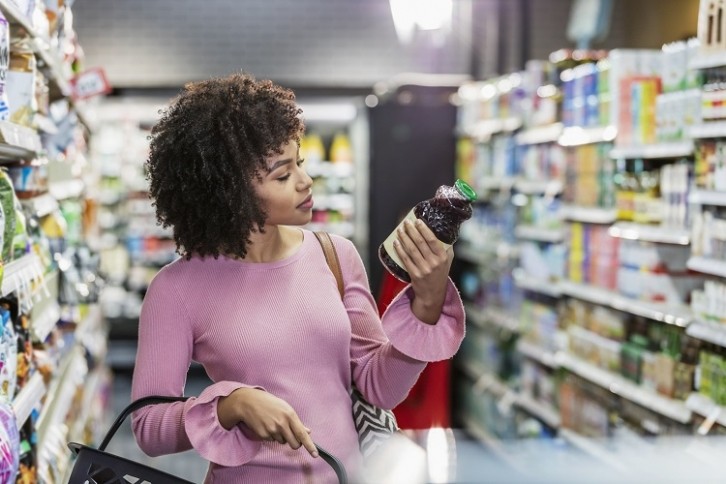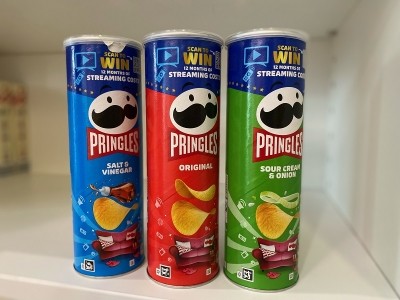Labelling landscape at risk of further turbulence in 2024

With new regulations due to come into effect, along with potential new governments and policies on the horizon, brands may fear modifying their product packaging in case further updates and changes are made. Yet, to comply with new rules, brands may need to adapt their labelling.
Amid the congruence of sociopolitical uncertainty and legal necessity, a big question mark hovers over how brands can best prepare for 2024’s labelling requirements. “2024 could be a turbulent year for food labelling updates and changes,” Brigid McKevith, Head of Regulatory at food labelling compliance company Ashbury, told FoodNavigator.
The UK, for example, is gearing up for the prospect of a new government in 2024. “With the potential of a new government in the UK, we could see things continue to change and pivot at the whims of political change,” McKevith added.
Food labelling today
Two words can describe the current food labelling landscape: “Brexit and Divergence”, McKevith, shared. “The pace of change is slow, and non-linear businesses are adapting their processes and labelling to comply with changes.” Various changes have occurred in 2023, leaving businesses “frustrated and left out of pocket as the government pivots and backtracks,” McKevith said.
In February 2023, the UK government announced the Windsor Framework and ‘not for EU’ labelling, creating a post-Brexit potential pathway that opens up a ‘Green Lane’ for goods heading to Northern Ireland.
The High Fat, Salt, and Sugar Foods (HFSS) regulations have set out restrictions on promoting and placing HFSS products in retail stores and online. Regulatory guidance on volume promotions, typified by buy-one-get-one-free offers, was due to take effect in October 2023 but has been delayed until October 2025. Similarly, a UK ban on advertising HFSS foods online and on television before 9pm has also been postponed until January 2025.
Environmental-led changes are also shaping the labelling space. “Recycling and packaging targets are creating frustration, particularly for exporters,” McKevith said “Each country is unique, requiring specific statements and symbols, demanding more label space and complicating multilingual packaging even more,” McKevith continued. The current labelling environment can also increase packaging costs for producers.
“There is lots of pressure on brands to use PET and remove single-use plastic from supply chains,” added McKevith. While this creates demand, supply cannot keep up, presenting another challenge for food and beverage companies.
Data and digital innovation advance labelling
Despite the labelling obstacles for producers, several opportunities exist in today’s sector. Throughout 2023, retailers and brands have continued to focus on effectively collecting and managing environmental data, McKevith added. The hope is that the growing understanding in this space will enable more robust and standardised reporting on sustainability, which can be presented via a single approach to carbon labelling.
Digital innovation is evolving and delivering new ways to connect with consumers. New European Union (EU) wine regulations coming into force on 8th December 2023 will allow ingredients and nutrition information to be provided off-label, such as via a QR code. Approval at an EU level proposes “a new direction of travel where more information may be provided digitally”, McKevith said. Although this presents areas for growth, accessibility remains a key challenge for now.
Protecting the planet
“The health of the planet and the health of the people” are the two guiding forces behind food labelling changes. Updates therefore predominantly revolve around accessibility, health and the environment. “Global access to safe, affordable and secure food sources has been under severe stress over the last few years, primarily due to the war in Ukraine and now the Middle East, as well as rising global inflation,” detailed McKevith.
Environment-related labelling changes are coming. The industry will shortly see the Implementation of Deposit Return Schemes (DRS), with changes coming to the Republic of Ireland starting on the 1st of February 2024 and labelling updates already underway. The UK should see plans for implementing this in 2024, with labelling changes and DRS to commence in October 2025. “It’s one to keep an eye on as we’ve already seen delays,” warned McKevith.
Looking ahead to 2024, what is clear is that “regulatory and enforcement focus on environmental claims will continue”. More rules like the EU’s deforestation regulations are already affecting the movement of goods that don’t comply, McKevith stated, and are anticipated.
Prioritising consumer health
In terms of changes related to human health, allergen labelling is still a significant topic. “There’s work to be done across the supply chain,” McKevith noted. Key focus areas relate to better understanding of potential allergen sources and risk of cross-contamination, proper management so consumers can make informed purchasing decisions, and better awareness of cross-contamination risks.
In September 2023, the Food Standards Agency (FSA) launched updated guidance for precautionary allergen labelling to support businesses in this area. There has also been some media attention focussed on the confusion between vegan and free-from products. “While no major moves are expected here, it is a space to keep an eye on and for brands to consider their own policy to ensure clarity for consumers,” added McKevith.
“Adding sugars are back on the chopping block”, McKevith noted, as part of the overall Public Health England strategy. As the European Food Safety Authority recently completed reviews on sugar, we can expect to see the conversation around these evolve in 2024, “possibly resulting in added sugars being teased out of total sugars and labelled as such”, added McKevith. Europeans may see an overhaul in sugar-related communications, as a result. “Messaging to consumers would be focused on reducing this from their diets,” added McKevith.
Brands using stevia as an alternative to sugar need to be aware of upcoming labelling changes in November 2024. “New rules require different labelling depending on the source of the stevia, adding complexity to the supply chain,” added McKevith.
Lingering interest remains following recent sweetener reports, such as the IARC’s insights on aspartame and the WHO’s take on sweeteners. “These reports have been heavily scrutinised and are unlikely to lead to regulatory changes in the short term but may play into pressures on clean ingredient lists and less processed foods,” shared McKevith.
“Ultra Processed Foods (UPFs) is a buzzword across the industry,” said McKevith. “While we don’t expect there to be any real legal change, brands and retailers are feeling the pressure and are updating their policies on food additives,” said McKevith.
The post-Brexit labelling space
For trade coming into the UK from abroad, the Windsor Framework and new import protocols from the Border Target Operating Model, setting out the UK government’s safety and security controls, will be under the spotlight and “continue to shake up the industry”, McKevith said. “For the UK, Brexit continues to impact supply chains, and exporters and importers regularly seek new guidance and reassurance that the goalposts won’t shift again,” added McKevith.
Practical applications of the law also raise questions about potential challenges, confusion and further changes. For example, how packaging producers sticker their labels is crucial, as products can only feature overlays if they cannot be removed.
In addition, the UK will introduce non-UK markings from 1st January 2024 for eggs from approved non-EU countries, replacing non-EU markings. Similar rules will apply to other food items, including fruit, vegetables, minced meats, veal, beef and olive oil. “These changes are coming in to portray a more accurate reflection of the situation post-Brexit,” added McKevith.
























